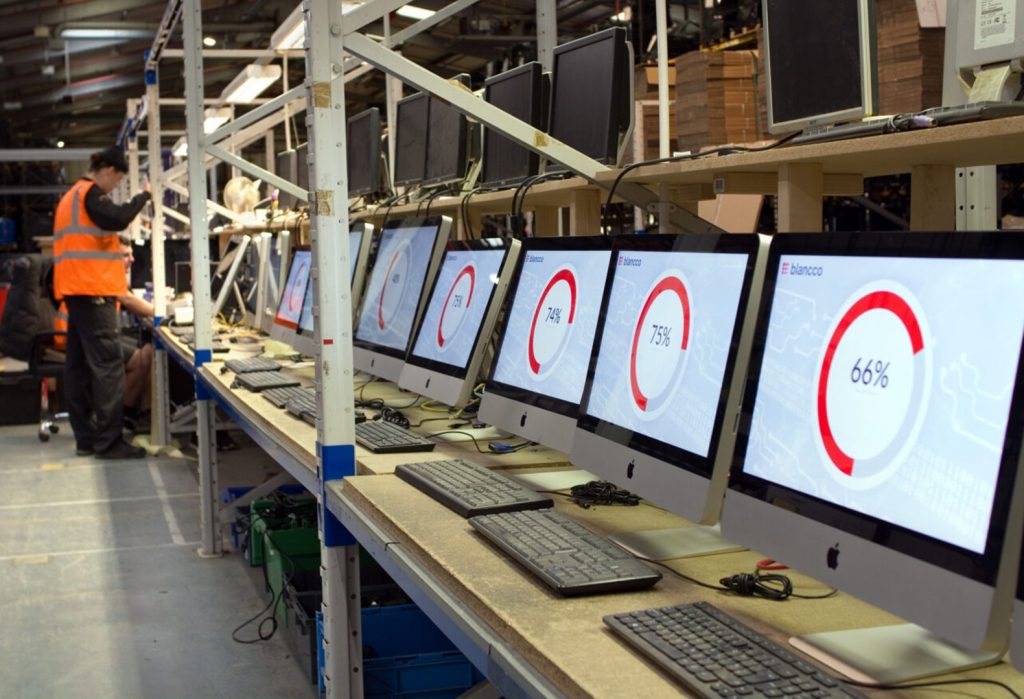How to Be GDPR Compliant With Your IT Disposal

With businesses relying on huge amounts of confidential data to operate, it’s vital to know how to protect it under GDPR at all times, even during equipment disposal. GDPR (General Data Protection Regulation) is a set of stringent data protection and privacy rules that ensure business and customer data security and privacy, but how do businesses ensure compliance during IT disposal? Read on to discover how our effective e-waste disposal processes eliminate any concerns regarding GDPR.
How GDPR Relates to IT Storage Disposal
Maintaining GDPR compliance is crucial for all businesses that collect, store, and dispose of sensitive data. Compliance with GDPR ensures that individuals have control over their data and that the security of their information is protected during all stages of the data lifecycle, including when data storage devices are disposed of, whether that’s phones, computers or even servers.
Under GDPR, businesses must maintain a record of their IT asset disposition. This record must be kept for the entire retention period, strictly monitored, and only handed over to authorised personnel when necessary. During IT disposition, data storage devices such as hard drives and USBs require particular attention as they will be targets for anyone wishing to access this secure data illegally.
What Ineffective Disposal Actions Risk GDPR Compliance?
Irresponsible disposal of IT assets poses a significant risk to data protection and privacy. It often results in data leaks, exposing sensitive data to unauthorised individuals and causing organisations to fail GDPR compliance. When it comes to IT disposal, there are several risks that businesses must be aware of to protect their sensitive data; the following are some examples.
Incomplete Deletions
Inadequate data erasure methods, such as simple deletion or formatting, can leave traces of data that hackers can recover, exposing confidential information. Proper data destruction is critical, especially when it comes to hard drives. Discarding these without certified data destruction leaves the possibility of data recovery from the drives, enabling hackers to access sensitive data and leading to data breaches and GDPR non-compliance.

Stolen Hard Drive Data
Handling storage devices must also be done carefully to prevent data loss and non-compliance. Storage device theft or loss is a real concern, and if confidential data falls into the wrong hands, it could compromise a business’s security. Proper data erasure and protection steps must be taken before selling, donating or otherwise discarding devices, as outdated information could be exposed to unauthorised individuals.
No Paper Trail Documentation
Using unreliable IT disposal providers presents another potential danger for businesses. Engaging unqualified or uncertified IT disposal providers exposes companies to a significant security risk. Such providers may lack expertise and secure data disposal methods, opening the door to data breaches. Maintaining a secure paper trail during IT disposal is also critical. A weak paper trail can lead to data breaches and GDPR non-compliance.
Failure to comply with GDPR can also result in heavy fines and damage to a business’s reputation. Therefore, knowing the legal requirements around data protection and disposal is essential. By following these guidelines, businesses can choose appropriate and competent providers to ensure data protection and GDPR compliance.
Eliminating GDPR Risks with Effective IT Disposal

Businesses should take several steps to mitigate these risks and ensure GDPR compliance. These include choosing certified IT equipment disposal providers that use secure and audited processes. Accurate documentation must be maintained throughout the disposal process to prevent GDPR non-compliance. For example, we provide a full audit to our clients of all redundant IT assets received in our AATF (approved, authorised treatment facility) and a certificate of destruction conducted so you can meet your GDPR requirements.
Training employees on data protection regulations and disposal procedures can help prevent human errors leading to data breaches. Secure data erasure and destruction techniques must be employed, especially in disposing of hard drives and other storage devices.
GDPR Compliant Data Erasure and Shredding
Secure data erasure is an essential component of GDPR compliance. Our certified data erasure services guarantee that sensitive data is managed and erased safely. The only way to permanently destroy data without physically destroying the hard drive is by overwriting existing data across the entire hard drive and resetting the file size to zero. Our secure data erasure methods remove sensitive data from various devices, including mobile phones, PCs, laptops, servers, and networking equipment.

We partner with Blancco, the global leader in data erasure and secure data destruction software. This partnership guarantees that every customer’s data is managed professionally and securely during electronic data erasure. Any device that fails the Blancco process will have the hard drive removed and shredded, ensuring complete data destruction.
Hard drive destruction involves physically destroying the storage device, rendering the data irretrievable. This method provides an extra layer of security, especially for extremely sensitive data or instances where data erasure might not be feasible. This is generally the final step in the data destruction process and eliminates any possibility of retrieving data.

GDPR Compliant Data Destruction at ICT Reverse
As a leading IT asset disposal service, we know the importance of protecting data under GDPR, as we have to ensure the confidentiality of our data and clients.
Our commitment to GDPR compliance extends to all stages of our data shredding and erasure services, from collection to disposal. By partnering with our expert team members, businesses trust that their sensitive data is handled securely and under GDPR as it is disposed of safely. Contact us today to discuss how we can help you securely dispose of your data storage devices.
